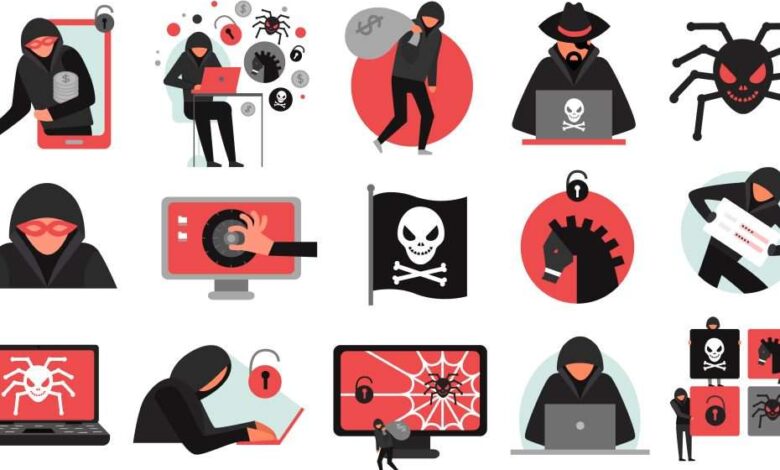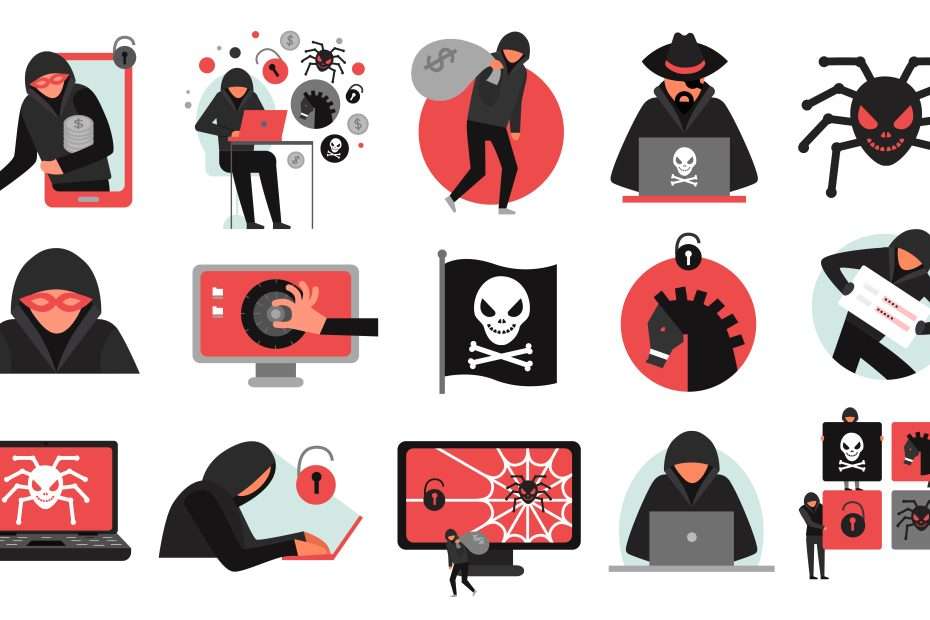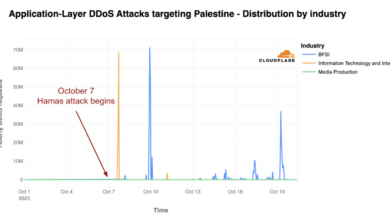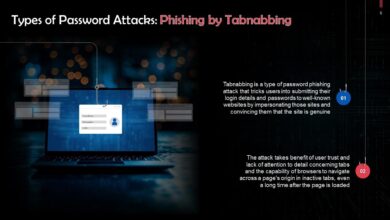
Getting Real About Ransomware
Getting real about ransomware means facing the harsh reality of this ever-evolving threat. It’s not just a tech problem; it’s a human one, impacting individuals and businesses alike with devastating financial and emotional consequences. This post dives deep into the world of ransomware, exploring its various forms, the devastating impact on victims, and the crucial steps we can all take to protect ourselves.
We’ll examine the tactics used by cybercriminals, from phishing scams to sophisticated exploits, and discuss the crippling costs associated with ransomware attacks – both monetary and in terms of lost productivity and reputation. We’ll also explore the psychological toll on victims, the ethical dilemmas surrounding ransom payments, and the vital role of law enforcement and cybersecurity professionals in combating this pervasive threat.
Finally, we’ll look towards the future of ransomware and what we can expect in the years to come.
The Reality of Ransomware Attacks
Ransomware attacks are no longer a niche threat; they’ve become a pervasive and costly problem affecting businesses and individuals worldwide. The sheer scale and sophistication of these attacks are constantly evolving, demanding a proactive and informed approach to cybersecurity. Understanding the current landscape, attack methods, and financial implications is crucial for effective mitigation.
Prevalence and Impact of Ransomware Families
The ransomware landscape is dominated by several key players, each with its own characteristics and targets. Some, like Ryuk and Conti, have been notorious for targeting large enterprises, causing significant financial and operational disruptions. Others, like LockBit and REvil, are known for their aggressive tactics and high ransom demands. The impact extends beyond direct financial losses; it includes data breaches, reputational damage, legal liabilities, and business interruption, often leading to long-term recovery efforts.
The increasing use of double extortion – encrypting data and then threatening to release stolen data publicly – significantly exacerbates the pressure on victims.
Methods of System Infiltration and Ransomware Deployment
Attackers employ a variety of methods to infiltrate systems and deploy ransomware. Phishing emails remain a primary vector, often containing malicious attachments or links that exploit software vulnerabilities. Exploiting known software vulnerabilities is another common tactic, with attackers scanning for unpatched systems and deploying ransomware through automated tools. Compromised credentials, obtained through various means including credential stuffing and brute-force attacks, also provide easy access to networks.
Once inside, attackers often move laterally within the network to identify and encrypt high-value data. The use of sophisticated techniques like living off the land (LOL) binaries and process injection further complicates detection and response.
Financial and Operational Costs of Ransomware Incidents
The financial and operational costs associated with ransomware incidents can be staggering. Direct costs include the ransom payment itself, which can range from a few thousand dollars to millions, depending on the size and criticality of the affected organization. Indirect costs are often significantly higher and include expenses related to incident response, data recovery, legal fees, regulatory fines, and lost business revenue due to downtime.
The operational disruption can lead to significant delays in projects, damaged customer relationships, and a loss of competitive advantage. For instance, a small business might face closure after a ransomware attack, while a large corporation could experience millions in losses due to downtime and reputational damage. The long-term costs of rebuilding trust and implementing robust security measures should also be considered.
Comparison of Ransomware Families
| Ransomware Family | Encryption Method | Ransom Demand | Known Affiliates/Tactics |
|---|---|---|---|
| Ryuk | AES-256 | Variable, often high | Known for targeting large enterprises; often deployed after initial access via other malware |
| Conti | AES-256 | Variable, often high | Known for its ransomware-as-a-service (RaaS) model and data exfiltration; now largely defunct but its tactics continue |
| LockBit | AES-256 | Variable, often high | Known for its aggressive tactics and public data leak sites; active and evolving |
| REvil (Sodinokibi) | AES-256 | Variable, often high | Known for targeting specific industries; largely disrupted but some variants remain |
Understanding the Victim’s Perspective: Getting Real About Ransomware
Ransomware attacks aren’t just about lost data and financial burdens; they inflict significant emotional and psychological damage on individuals and organizations. The feeling of helplessness, the violation of security, and the pressure to make incredibly difficult decisions can leave lasting scars. Understanding this human element is crucial to comprehending the true impact of these attacks.The immediate aftermath of a ransomware attack is often characterized by a whirlwind of confusion and fear.
Victims grapple with the realization that their sensitive data – personal information, financial records, or critical business files – is compromised and potentially in the hands of malicious actors. This initial shock can quickly escalate into a sense of panic and desperation, especially when faced with the ultimatum of paying a ransom to regain access.
The Pressure to Pay and Ethical Dilemmas
The decision of whether or not to pay a ransom is fraught with ethical and practical dilemmas. Paying the ransom might seem like the quickest route to restoring operations or recovering vital data, but it also fuels the ransomware ecosystem, encouraging further attacks. Organizations face the difficult choice between risking significant financial losses and reputational damage from a prolonged outage versus potentially rewarding cybercriminals and setting a dangerous precedent.
The potential legal ramifications, including investigations and fines for non-compliance with data protection regulations, further complicate this already stressful situation. Furthermore, there’s no guarantee that paying the ransom will lead to the recovery of data; criminals often fail to deliver on their promises.
Real-World Examples of Ransomware Attacks and Recovery Efforts, Getting real about ransomware
Several organizations have publicly shared their experiences with ransomware attacks, offering valuable insights into the challenges of recovery and the long-term consequences. Examining these examples highlights the diverse impacts and the varying approaches taken to mitigate the damage.
- Colonial Pipeline: This major US fuel pipeline suffered a ransomware attack in 2021, leading to widespread fuel shortages. The company paid a $4.4 million ransom, highlighting the significant financial pressure faced by critical infrastructure providers. Key takeaway: Even large organizations with robust security measures can fall victim, and the consequences can be far-reaching.
- JBS Foods: In 2021, the world’s largest meat processing company was hit by a ransomware attack that disrupted operations globally. JBS also paid a ransom, demonstrating the immense pressure to minimize economic losses in a time-sensitive situation. Key takeaway: The impact of ransomware can extend far beyond the immediate victim, affecting supply chains and consumers worldwide.
- City of Atlanta: In 2018, the city of Atlanta was hit by a ransomware attack that crippled various city services. The attack exposed the vulnerabilities of interconnected municipal systems and the difficulty of recovering from a widespread attack. Key takeaway: Municipalities, with their diverse and often outdated systems, are particularly vulnerable to ransomware attacks.
Hypothetical Scenario: Immediate Response to a Ransomware Attack
Imagine a small business discovers its computer systems are encrypted with ransomware. A ransom note demands payment in cryptocurrency within 72 hours.
- Immediate Action: Disconnect affected systems from the network to prevent further spread of the malware. This limits the damage and prevents further encryption.
- Data Backup Assessment: Determine if recent backups are available and unaffected. If so, initiate recovery procedures. If not, explore other data recovery options.
- Forensic Investigation: Contact cybersecurity experts or law enforcement to conduct a thorough investigation to determine the type of ransomware, the extent of the breach, and the source of the attack. This will help in future prevention.
- Communication Plan: Develop a clear communication strategy to inform employees, customers, and stakeholders about the incident and the steps being taken to address it. Transparency is key in mitigating reputational damage.
- Ransom Decision: Carefully weigh the pros and cons of paying the ransom, considering the legal, ethical, and financial implications. Consult with legal counsel and cybersecurity professionals before making a decision.
Prevention and Mitigation Strategies
Ransomware attacks are a significant threat to organizations of all sizes. Proactive prevention and robust mitigation strategies are crucial to minimizing the impact of a successful attack. This section will explore several key areas that organizations should focus on to strengthen their cybersecurity posture and reduce their vulnerability to ransomware.Effective prevention requires a multi-layered approach, combining technical safeguards with strong employee training and awareness.
Let’s get real about ransomware; the threat is everywhere, preying on our vulnerabilities. It’s chilling to think how easily that access can be gained, especially considering recent news like this article detailing Facebook asking bank account info and card transactions of users: facebook asking bank account info and card transactions of users. This highlights how personal data breaches can pave the way for ransomware attacks, making strong security practices even more crucial.
No single solution guarantees complete protection, but a well-integrated strategy significantly reduces the likelihood of a successful attack and limits the damage if one does occur.
Effective Preventative Measures
Implementing strong preventative measures is the first line of defense against ransomware. This involves a combination of technical controls and security best practices. Regular software updates, including patching operating systems and applications, are essential to eliminate known vulnerabilities that attackers often exploit. Strong password policies, employing multi-factor authentication (MFA) wherever possible, and restricting administrative privileges to only authorized personnel significantly hinder unauthorized access.
Network segmentation isolates sensitive data and limits the impact of a breach, preventing ransomware from spreading rapidly across the entire network. Finally, regularly backing up critical data to offline storage ensures data recovery even if ransomware encrypts your systems. The principle of least privilege should also be strictly enforced, limiting user access to only the data and resources necessary for their roles.
Robust Data Backup and Recovery Procedures
Data backup and recovery are not just a best practice; they are a critical component of any effective ransomware mitigation strategy. Regular, automated backups to an offline or air-gapped storage system are essential. This ensures that even if ransomware encrypts your primary data, you have a clean copy readily available for restoration. It’s crucial to test your backup and recovery procedures regularly to ensure they function correctly and that your data can be restored quickly and effectively.
The 3-2-1 backup rule – three copies of data, on two different media, with one copy offsite – is a widely accepted standard for ensuring data protection. Furthermore, the recovery process should be well-documented and regularly practiced by IT personnel to minimize downtime in the event of a ransomware attack. Consider using immutable backups, which cannot be altered or deleted, to further enhance data protection.
Cybersecurity Solutions: EDR and SIEM
Endpoint Detection and Response (EDR) solutions provide advanced threat detection and response capabilities at the endpoint level (individual computers and devices). They monitor system activity for malicious behavior, providing real-time alerts and allowing security teams to investigate and respond to threats quickly. Security Information and Event Management (SIEM) systems collect and analyze security logs from various sources across the network, providing a centralized view of security events and helping identify potential threats and security breaches.
While EDR focuses on individual endpoints, SIEM offers a broader, network-wide perspective. Many organizations benefit from using both technologies in a complementary manner, combining the granular detail of EDR with the broader context provided by SIEM. For example, an EDR solution might detect suspicious activity on a single endpoint, while the SIEM system can correlate this event with other suspicious activities across the network, providing a more comprehensive understanding of the threat.
Employee Training and Awareness Programs
Employee training is a crucial element of any effective ransomware prevention strategy. Employees are often the weakest link in the security chain, falling victim to phishing attacks or inadvertently downloading malware. Comprehensive training programs should educate employees about various ransomware attack vectors, including phishing emails, malicious attachments, and suspicious websites. Employees should be trained to identify and report suspicious emails or websites, and to understand the importance of strong password hygiene and practicing safe browsing habits.
Regular security awareness training, including simulated phishing attacks, helps reinforce these best practices and improve employee vigilance. The training should emphasize the consequences of a ransomware attack, both for the organization and for individual employees. This includes the potential for data breaches, financial losses, and reputational damage. Furthermore, clear guidelines on how to report suspicious activity should be established and communicated to all employees.
The Role of Law Enforcement and Cybersecurity Professionals

Ransomware attacks are a complex problem requiring a multifaceted response. Effective mitigation relies heavily on the coordinated efforts of law enforcement agencies and cybersecurity professionals, each bringing unique skills and resources to the table. Their collaboration is crucial in investigating attacks, bringing perpetrators to justice, and helping victims recover.Law enforcement agencies face significant hurdles in investigating and prosecuting ransomware attacks.
These challenges stem from the often transnational nature of cybercrime, the difficulty in tracing cryptocurrency payments, and the sophisticated techniques used by attackers to mask their identities and operations. Furthermore, the legal frameworks for prosecuting these crimes are still evolving, and international cooperation is often essential but difficult to achieve swiftly enough to prevent further damage. The ephemeral nature of the digital evidence and the constant evolution of ransomware tactics make it a constantly shifting battleground for law enforcement.
Challenges Faced by Law Enforcement in Ransomware Investigations
Law enforcement faces a multitude of challenges in investigating and prosecuting ransomware attacks. Jurisdictional issues often complicate investigations, especially when attackers are based in countries with different legal systems or lack of extradition treaties. The decentralized and anonymous nature of cryptocurrency transactions makes it difficult to trace the flow of ransom payments and identify the perpetrators. Furthermore, the sophisticated techniques employed by ransomware operators, such as using encrypted communication channels and employing botnets to distribute malware, hinder investigative efforts.
The sheer volume of ransomware attacks also strains law enforcement resources, making it difficult to prioritize and effectively investigate each case. Finally, the rapidly evolving tactics, techniques, and procedures (TTPs) used by cybercriminals necessitate continuous adaptation and training for investigators.
The Role of Cybersecurity Professionals in Incident Response and Remediation
Cybersecurity professionals play a critical role in responding to and remediating ransomware attacks. Their expertise is vital in containing the attack, minimizing data loss, and restoring systems to operational status. This includes identifying the source of the infection, removing the malware, recovering encrypted data (where possible), and implementing security measures to prevent future attacks. Cybersecurity professionals also work closely with law enforcement to provide technical expertise during investigations, such as analyzing malware samples, identifying attack vectors, and providing information on the attacker’s infrastructure.
Furthermore, they play a crucial role in educating organizations about best practices for ransomware prevention and preparedness.
Successful Collaborations Between Law Enforcement and the Private Sector
Several successful collaborations between law enforcement and the private sector demonstrate the effectiveness of a coordinated approach to combating ransomware. For example, the joint efforts of the FBI and private cybersecurity firms have led to the disruption of several significant ransomware operations, including the takedown of infrastructure used by ransomware gangs. Information sharing initiatives, such as those facilitated by the Cybersecurity and Infrastructure Security Agency (CISA), allow for the rapid dissemination of threat intelligence and the development of coordinated responses to emerging ransomware threats.
These collaborations leverage the unique strengths of both sectors—law enforcement’s investigative and prosecutorial capabilities and the private sector’s technical expertise and threat intelligence—to achieve a greater impact than either could accomplish alone. One notable example is the disruption of the REvil ransomware operation, which involved international collaboration and resulted in the recovery of millions of dollars in ransom payments.
Visual Representation of a Ransomware Attack Investigation and Response
Imagine a flowchart. The first stage, “Attack Detection,” is represented by a computer screen displaying a ransomware notification. This leads to “Incident Response Initiation,” depicted by a phone call between a victim and a cybersecurity professional. Next, “Containment and Eradication” is shown as a technician working on a computer, highlighting malware removal. This is followed by “Forensic Analysis,” depicted by a magnifying glass over a hard drive, symbolizing data recovery efforts.
“Law Enforcement Engagement” is shown by a police officer collaborating with the cybersecurity professional. The final stage, “Remediation and Prevention,” is represented by a shield protecting a computer, symbolizing strengthened security measures. The overall image is dark, emphasizing the seriousness of the situation, with bright highlights on the collaborative elements to emphasize the importance of teamwork. The flowchart uses clear, easily understandable icons, maintaining a professional and informative tone.
Let’s get real about ransomware; it’s a serious threat, and proper security is crucial. A key part of that is understanding your cloud security posture, which is why I found the article on bitglass and the rise of cloud security posture management so insightful. Strengthening cloud security directly impacts your ransomware resilience, making proactive management essential for peace of mind.
The Future of Ransomware and its Implications
The landscape of ransomware is constantly evolving, becoming more sophisticated and impactful. Predicting the future is inherently uncertain, but by analyzing current trends and emerging technologies, we can anticipate likely developments and their consequences for individuals and organizations. Understanding these potential shifts is crucial for proactive defense strategies.
The increasing sophistication of ransomware attacks, coupled with the growing reliance on digital infrastructure, paints a picture of a future where the threat will only intensify. This necessitates a shift from reactive measures to a more proactive and adaptable approach to cybersecurity.
Double Extortion and Data Breaches
Double extortion, where attackers encrypt data and also steal it, threatening to publicly release sensitive information if a ransom isn’t paid, is rapidly becoming the norm. This tactic significantly increases the pressure on victims, as the reputational damage from a data breach can be far more costly than the financial loss from encrypted systems. We’ve already seen examples of this with high-profile attacks targeting healthcare providers and financial institutions, resulting in significant fines and legal repercussions beyond the initial ransom demands.
The future likely holds even more aggressive data exfiltration and targeted leaks, potentially leveraging AI to identify the most damaging data to release.
The Impact of Blockchain and AI
The use of blockchain technology by ransomware gangs is a growing concern. While blockchain’s inherent transparency and immutability could theoretically be used to track ransomware payments, it’s more likely to be used to create more anonymous and untraceable payment systems, making investigations and prosecutions more challenging. Conversely, AI is being employed both offensively and defensively. Attackers are using AI to automate the identification of vulnerable systems and personalize phishing attacks, while defenders are leveraging AI for threat detection, vulnerability assessment, and incident response.
This creates an ongoing arms race in the cybersecurity world. For example, AI-powered threat intelligence platforms are improving detection rates, but attackers are developing techniques to evade these systems.
Future Developments in Prevention and Mitigation
The future of ransomware prevention and mitigation will rely heavily on a multi-layered approach. This includes: improved endpoint detection and response (EDR) solutions with AI-powered threat hunting capabilities; robust data backups and recovery plans, including offline and immutable backups; enhanced employee training to improve phishing awareness; zero trust security models limiting access to critical systems; and stronger regulatory frameworks and international cooperation to disrupt ransomware gangs.
The development and implementation of advanced encryption techniques, potentially quantum-resistant cryptography, will also be critical in mitigating future threats.
Let’s get real about ransomware; the threat is serious, and robust data security is paramount. Building resilient systems requires careful planning, and that includes considering the efficiency gains from modern development tools. Learning about the advancements in domino app dev, the low-code and pro-code future , can help us create more secure and agile applications.
Ultimately, a strong defense against ransomware relies on a combination of strong security practices and efficient, well-designed systems.
Impact on Organizations and Individuals
The evolving nature of ransomware will significantly impact organizations and individuals in the coming years. This impact can be summarized as follows:
- Increased frequency and severity of attacks: Expect a rise in the number and sophistication of attacks, targeting both large organizations and individuals.
- Higher financial costs: Ransom demands will likely increase, and the costs associated with recovery, legal fees, and reputational damage will continue to rise.
- Greater regulatory scrutiny: Organizations will face increased pressure to comply with data privacy regulations and demonstrate their ability to prevent and respond to ransomware attacks.
- Enhanced cybersecurity skills gap: The demand for skilled cybersecurity professionals will continue to outpace supply, making it crucial to invest in training and education.
- Shift towards proactive security: Organizations will need to adopt a more proactive security posture, focusing on prevention and preparedness rather than solely reactive measures.
Conclusive Thoughts

Ransomware is a serious and evolving threat, but understanding its mechanics, implementing preventative measures, and fostering collaboration between individuals, organizations, and law enforcement are crucial steps in mitigating its impact. While the landscape of cybercrime is constantly shifting, staying informed, proactive, and prepared is the best defense against this increasingly sophisticated form of digital extortion. Don’t wait until it’s too late; take control of your cybersecurity today.
FAQ Insights
What should I do if I suspect a ransomware attack?
Immediately disconnect from the network to prevent further spread. Do not attempt to decrypt files yourself. Contact law enforcement and a cybersecurity professional for assistance.
Is paying the ransom ever a good idea?
Paying the ransom is generally not recommended. There’s no guarantee you’ll get your data back, and you’ll be encouraging further attacks. Focus on prevention and recovery through backups.
How can I protect myself from ransomware?
Regularly update software, use strong passwords, be wary of phishing emails, and implement robust data backups. Consider using endpoint detection and response (EDR) solutions.
What types of ransomware are most common?
Common ransomware families include Ryuk, REvil (Sodinokibi), Conti, and LockBit. New variants emerge constantly, so staying updated on the latest threats is crucial.





